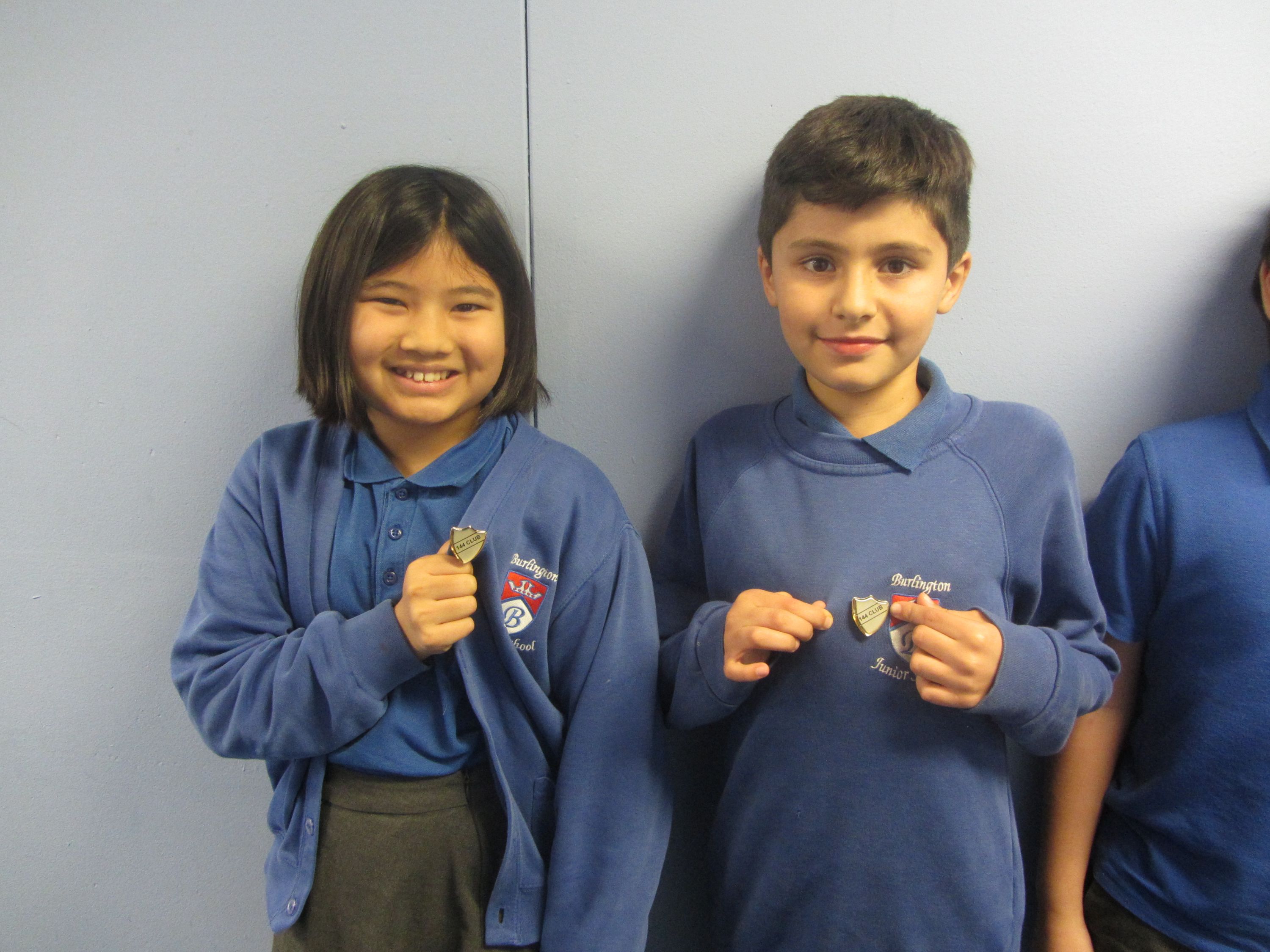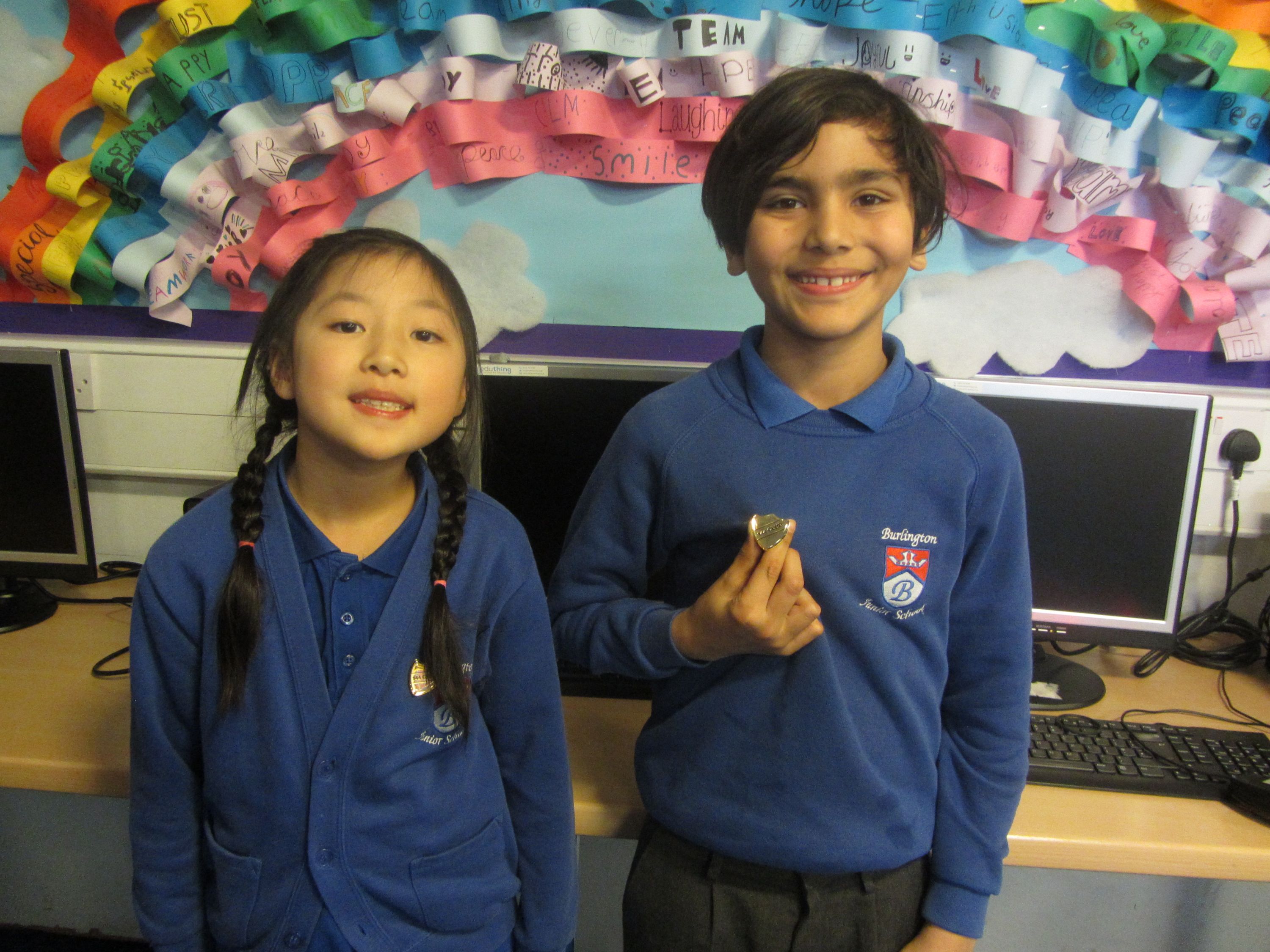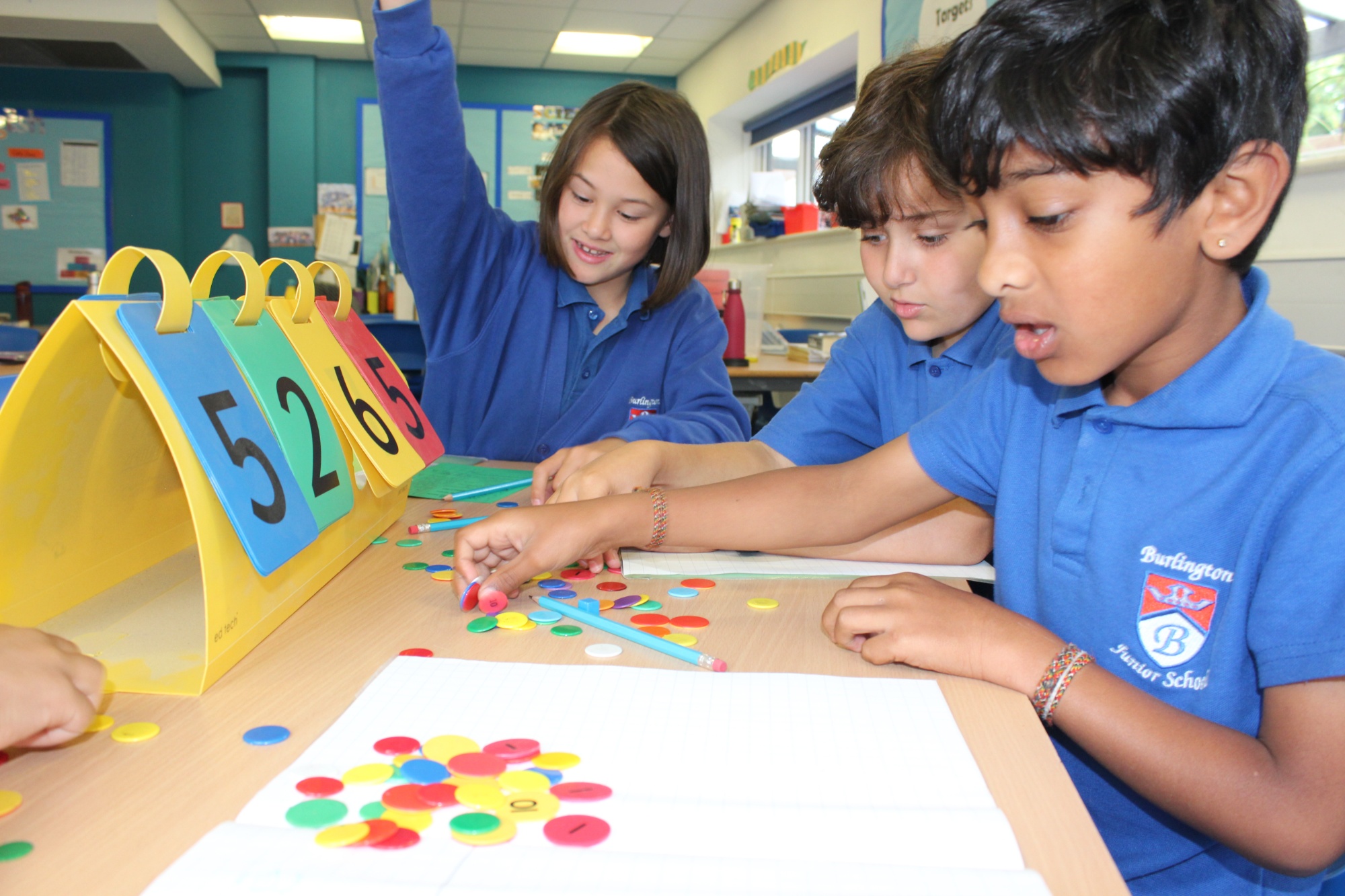Maths
At Burlington Junior School, we consider mathematics as far more than simply a core curriculum topic; it is central to helping children become happy, articulate and confident individuals. Developing numerical fluency prepares children to access a world surrounded by number. It equips young people with key skills such as calculating, estimating, observing and predicting, which will be used extensively throughout their lives.
Our Maths Curriculum
We take a maths mastery style approach to our teaching whereby students are encouraged to develop a deeper understanding of concepts.The Five Big Ideas that underpin teaching for mastery are: coherence, representation and structure, mathematical thinking, variation and fluency. Teachers use White Rose Schemes of Learning and resources to support their lesson sequence and design.
All children are entitled to access the Mathematics National Curriculum Programmes of Study and make progress through appropriately planned work. In line with the aims of the National Curriculum, our schemes of work allow pupils to develop their fluency, mathematical reasoning and problem-solving skills. Topics are planned using small steps to help children make links within their learning. All children have the same starting point within a lesson but as students master concepts to a greater depth they build on their application and reasoning skills.
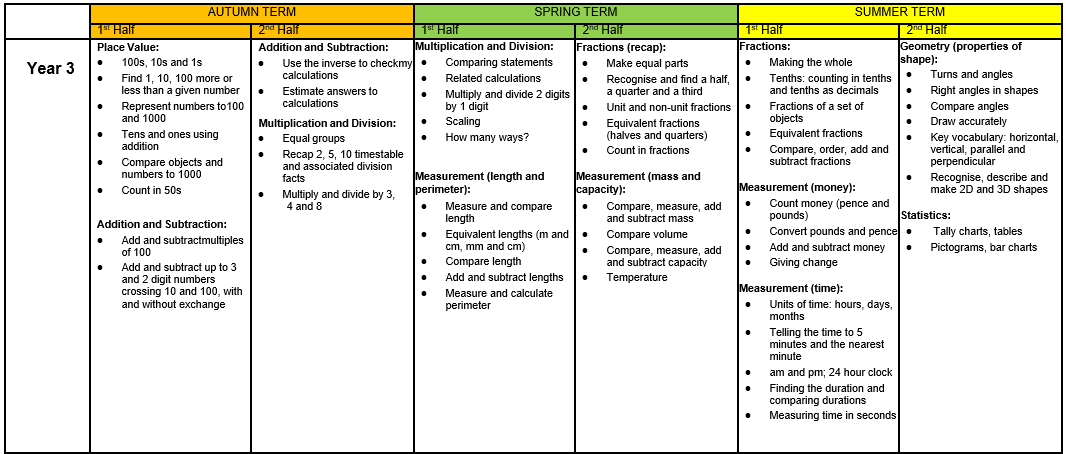
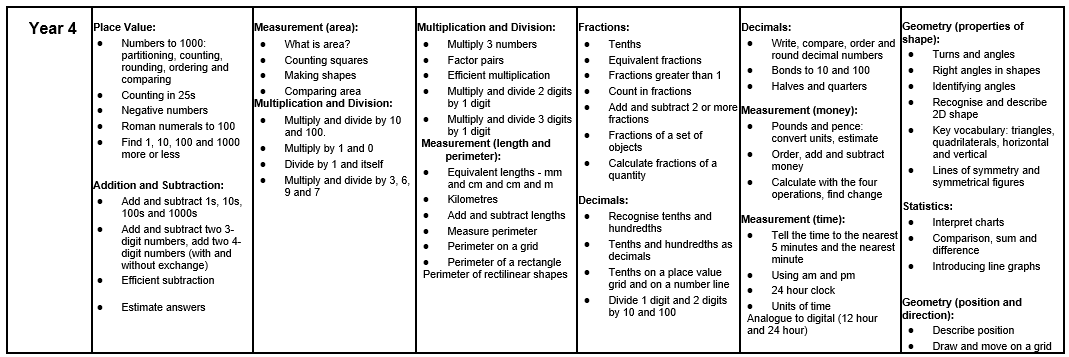
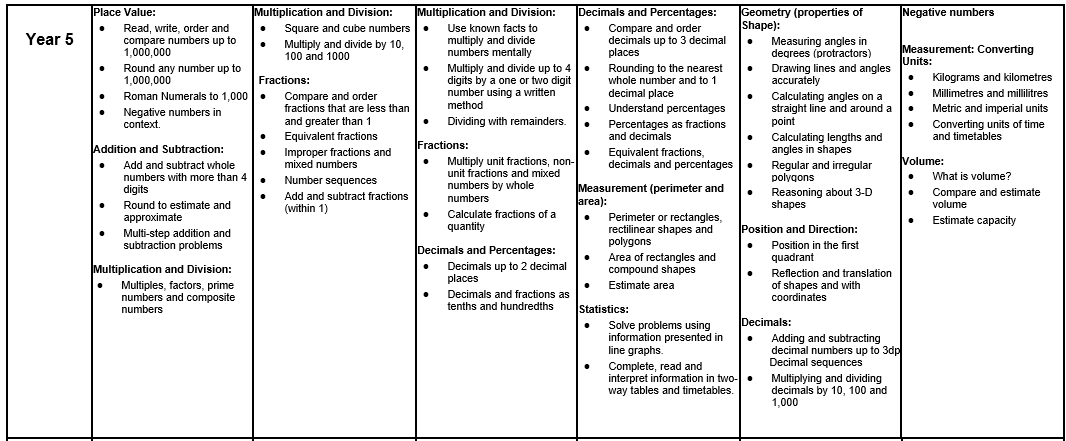
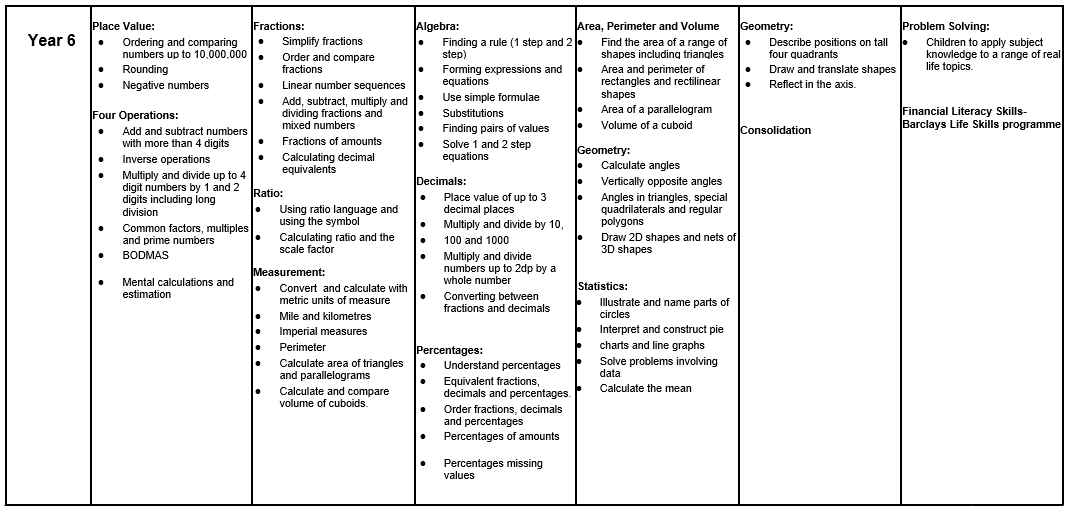
Methods of Calculation
Please take a look at the drop-down menus below to see some videos of children sharing the written methods of calculation used at Burlington Junior School.
Multiplication - Written Methods
Expanded Written Method - TO X O
Short Multiplication - multiplying by a single digit, e.g. HTO X O
Long Multiplication - multiplying by a two digit number, e.g. HTO X TO
Division - Written Methods
Written Method - 2 digits divided by 1 digit
Written Method - 3 digits divided by 1 digit
Written Method - 2 digits divided by 1 digit
Enrichment in Maths
The 144 Club
What is the 144 club?
A club where you have to answer 144 mixed multiplication and division questions, for all times tables, in less than five minutes. You will know if a child is part of the club as you will see them walking around the school proudly wearing their gold 144 badge.
Why do we have a 144 club?
The National Curriculum states that by the end of year 4, children should be able to recall their multiplication and division facts up to 12 x 12. This club encourages children to learn them rapidly and rewards them for doing so.
How do children join the 144 club?
If your child thinks they are ready to take the test, all they have to do is tell their teacher and they will be given an opportunity to do it. They will be able to join if they answer all of the 144 questions correctly in less than five minutes.
Why do we ask children to give their badges back at the end of the school year?
To highlight the importance of continuously practising their multiplication and division facts. Children must keep practising recalling them to ensure they are not forgotten; however, they do get to keep their certificate.
Home Learning in Maths
Every week, children will be set maths homework on Mathletics. This will be based on what they have been learning in class so it allows them to consolidate and revisit topics.
In addition to this, children are also expected to regularly practise their multiplication and division facts on Times Tables Rockstars.
How can you help your child with their learning at home?
Any opportunities that you can take to talk about and use maths at home is helpful for children. It is important to model a positive attitude towards maths when you are talking about the subject. The list below shares some ideas about how to use maths at home:
- Model a positive attitude towards maths when you are talking about the subject with your child.
- Encourage regular times tables practice.
- Practise telling the time and take regular opportunities to talk about time.
- Cook or bake together at home: weight ingredients, estimate measurements, discuss cooking times.
- Discuss budgeting and saving money.
- Work out the cost of items together when in supermarkets and shops.
- Encourage problem-solving in real-life situation.
Useful Learning Links
NRich - Mathematical Challenges









